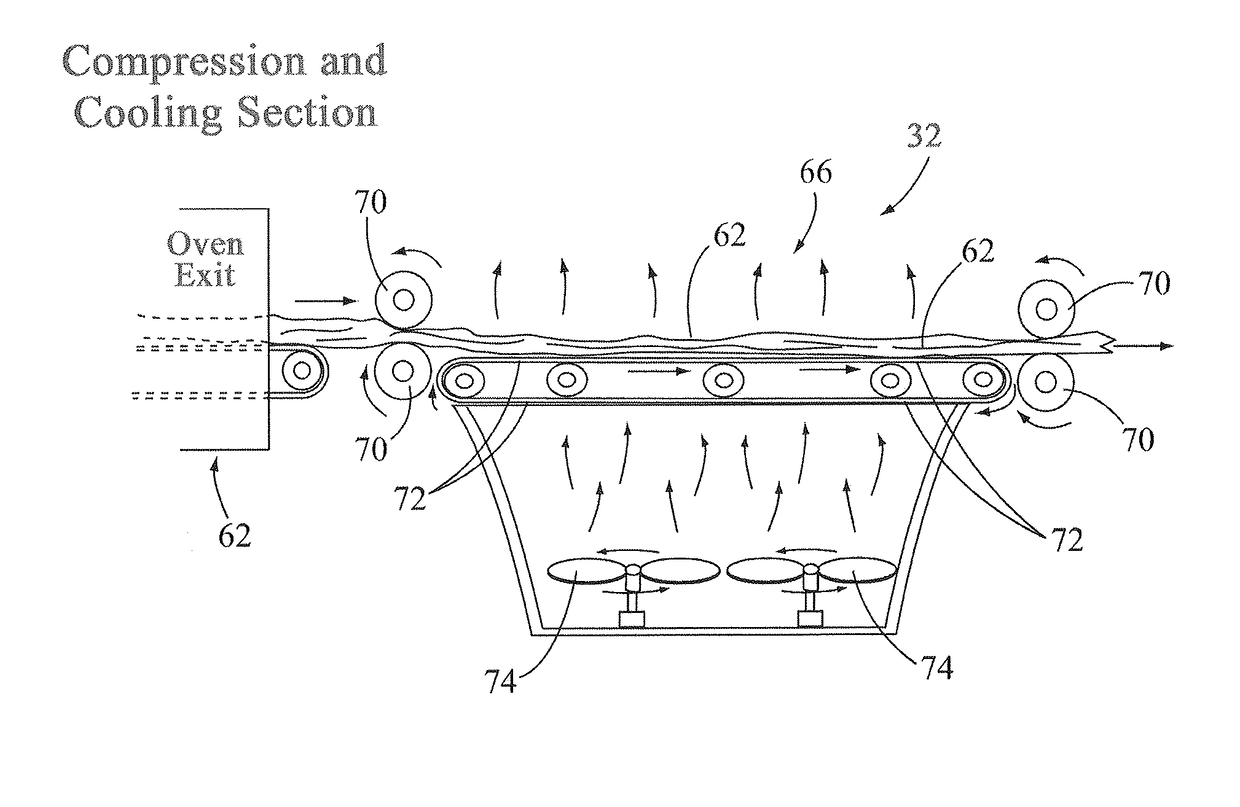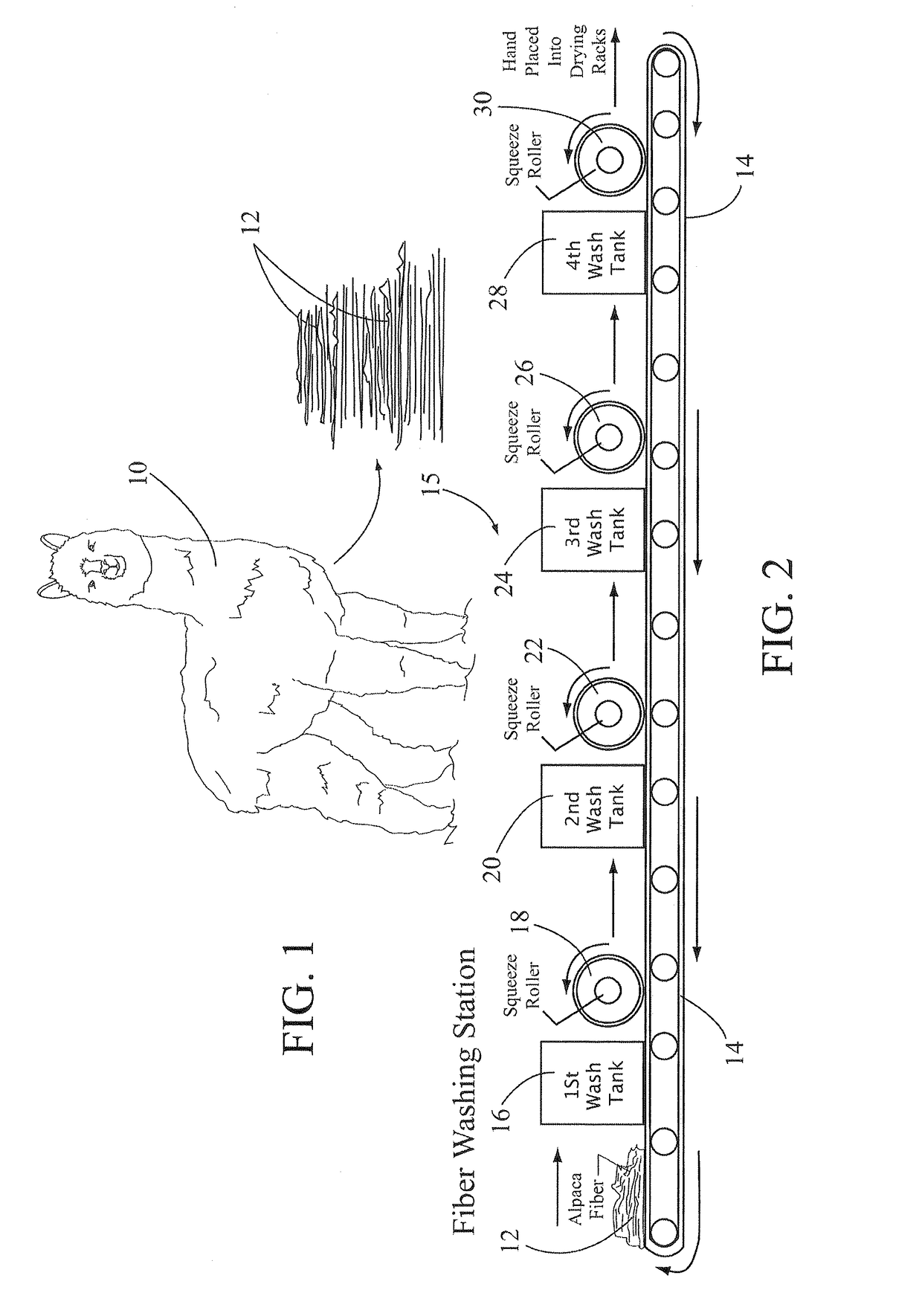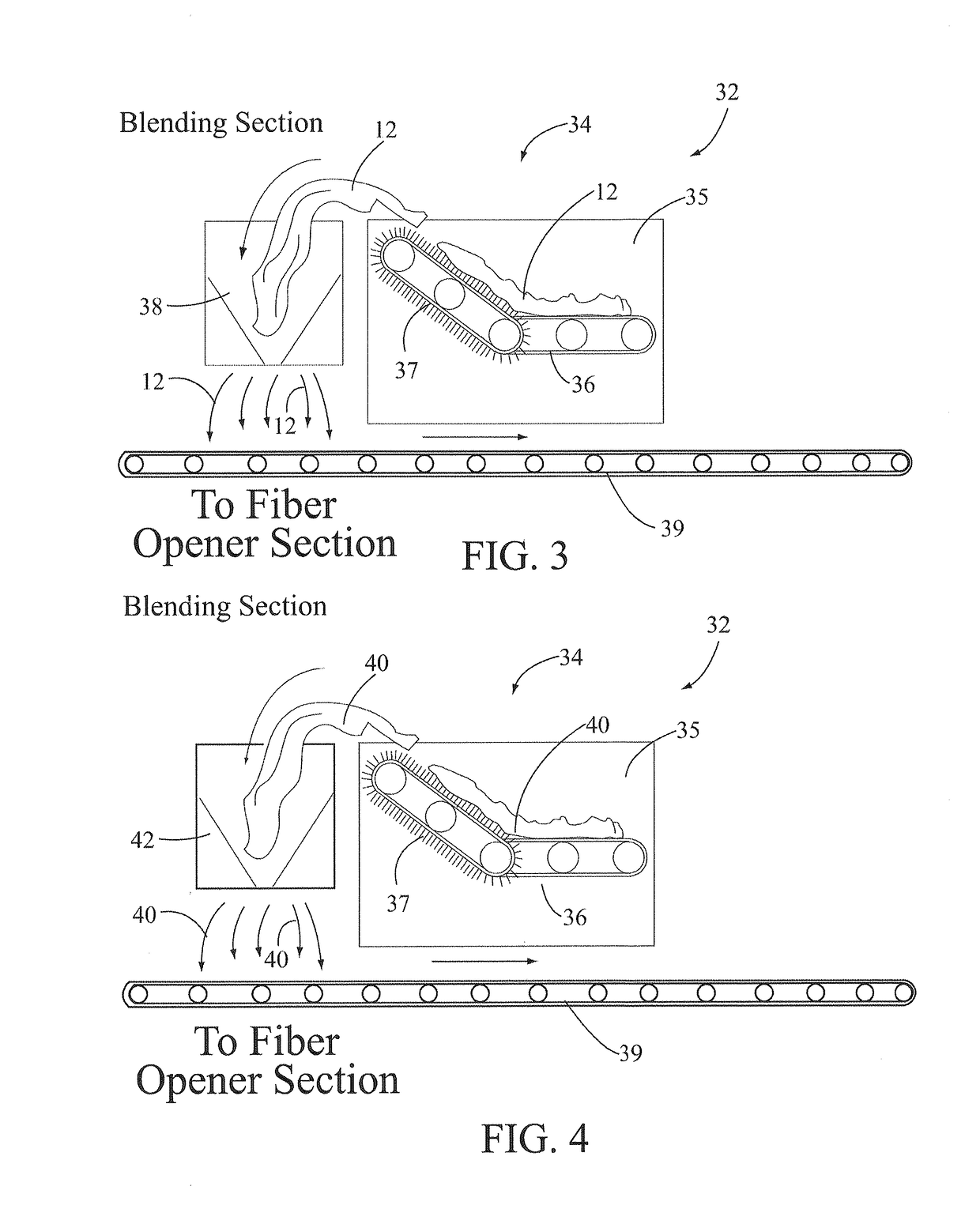Blended fiber pad
a blended fiber and pad technology, applied in the field of blended fiber pad, can solve the problems that none of the prior art items provide the unique features and advantages, and achieve the effect of eliminating any false lo
- Summary
- Abstract
- Description
- Claims
- Application Information
AI Technical Summary
Benefits of technology
Problems solved by technology
Method used
Image
Examples
Embodiment Construction
[0023]In FIG. 1, an alpaca 10 is shown with a portion of alpaca fiber sheared from the animal. The alpaca fiber is mixed with a selected natural fiber. The combination of fibers as a mixture is illustrated in the drawings as numeral 12.
[0024]It is important to point out, this application's parent application, Ser. No. 14 / 473,016, discloses a method and system of making an alpaca bonded fiber pad using exclusively alpaca with a low melt bonding fiber. In this CIP application, the alpaca fiber is mixed with a selected fiber. The fiber can be from a class of natural animal fibers, natural plant fibers, or man-made filament fibers. The mixture or combination of fibers can be in a range of 10 to 90 percent alpaca fibers or in a range of 10 to 90 percent natural fibers. The low melt bond material can be added to the mixture in a range of 5 to 15 percent. Also, the low melt bond material can be made of a polyester fiber or similar material. As an example, the blended fiber pad can be made ...
PUM
| Property | Measurement | Unit |
|---|---|---|
| melt | aaaaa | aaaaa |
| thickness | aaaaa | aaaaa |
| height | aaaaa | aaaaa |
Abstract
Description
Claims
Application Information
 Login to View More
Login to View More - R&D
- Intellectual Property
- Life Sciences
- Materials
- Tech Scout
- Unparalleled Data Quality
- Higher Quality Content
- 60% Fewer Hallucinations
Browse by: Latest US Patents, China's latest patents, Technical Efficacy Thesaurus, Application Domain, Technology Topic, Popular Technical Reports.
© 2025 PatSnap. All rights reserved.Legal|Privacy policy|Modern Slavery Act Transparency Statement|Sitemap|About US| Contact US: help@patsnap.com



